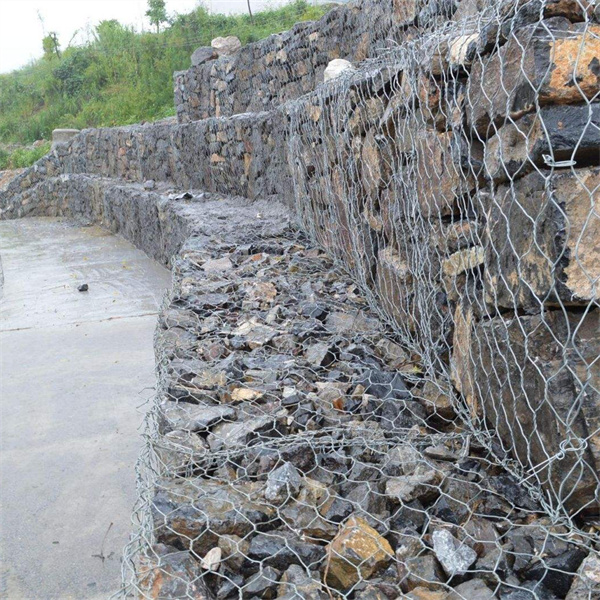Dec . 04, 2024 23:10 Back to list
gabion retaining wall maximum height factory
Gabion Retaining Walls Maximum Height Considerations
Gabion retaining walls have gained significant popularity in civil engineering due to their versatile applications and aesthetic appeal. These structures are constructed using wire mesh cages filled with stones, rock, or other materials, which are stacked together to form a stable barrier against soil erosion and to provide support for vertical changes in ground elevation. One of the main considerations in the design of gabion retaining walls is their maximum height, which directly impacts their effectiveness and stability.
Understanding Gabion Structures
Gabion walls are not just functional; they also blend well with natural landscapes. The materials used in these walls can vary widely, offering a unique aesthetic finish. Commonly chosen materials include granite, limestone, and recycled concrete. The wire mesh can also be galvanized or PVC-coated to enhance durability and resistance to corrosion.
Factors Influencing Maximum Height
When determining the maximum height for a gabion retaining wall, several engineering factors must be considered to ensure the wall's integrity and longevity
1. Soil Properties The type of soil behind the wall significantly affects its design. Cohesive soils, like clay, may exert different pressures compared to granular soils, such as sand. A thorough geotechnical study is crucial to assess these properties and predict the behavior of the soil under various conditions.
2. Wall Design and Configuration The overall design, which includes the thickness of the wall and the type of materials used, plays a pivotal role. Taller walls may require thicker bases and enhanced stability features, such as a batter (slope) or a wider foundation to accommodate lateral earth pressures.
gabion retaining wall maximum height factory

3. Hydraulic Considerations Gabion walls can sometimes obscure natural drainage paths. Proper drainage provisions, such as weep holes or backdrains, are necessary to mitigate water pressure buildup behind the wall caused by rainfall or groundwater. Failure to manage water can lead to increased pressure and potential wall failure.
4. Loading Conditions Additional loads, such as traffic or structural loads from nearby constructions, can affect the maximum height. The structure must be designed to withstand not only the weight of the soil but any extra forces that may be applied during its service life.
5. Local Regulations In many regions, construction codes dictate maximum heights for retaining walls. These regulations ensure safety and adherence to best practices in engineering design.
Recommended Height Guidelines
While the maximum height for gabion retaining walls can vary based on the factors mentioned above, general guidelines suggest that walls should typically not exceed 1.0 to 2.0 meters (approximately 3 to 6.5 feet) without employing advanced engineering techniques. For walls exceeding this height, it is advisable to consult a structural engineer to conduct rigorous stability analyses and consider reinforcement strategies, such as geogrids or soil anchors.
Conclusion
Gabion retaining walls serve as effective solutions for soil retention and erosion control while harmonizing with the surrounding environment. However, ensuring their stability and effectiveness at maximum heights requires careful consideration of multiple factors, including soil behavior, wall design, drainage management, additional loads, and compliance with local building codes. Engaging with experienced engineers during the planning and design phases can lead to a successful and long-lasting gabion retaining wall that caters to both functional and aesthetic needs. By adhering to these guidelines, developers can capitalize on the benefits of gabion structures while ensuring safety and performance.
-
Visualizing Gabion 3D Integration in Urban Landscapes with Rendering
NewsJul.23,2025
-
The Design and Sustainability of Gabion Wire Mesh Panels
NewsJul.23,2025
-
The Acoustic Performance of Gabion Sound Barriers in Urban Environments
NewsJul.23,2025
-
Mastering the Installation of Galvanized Gabion Structures
NewsJul.23,2025
-
Gabion Boxes: Pioneering Sustainable Infrastructure Across the Globe
NewsJul.23,2025
-
Custom PVC Coated Gabion Boxes for Aesthetic Excellence
NewsJul.23,2025
-
Installation Tips for Gabion Wire Baskets in Erosion Control Projects
NewsJul.21,2025






